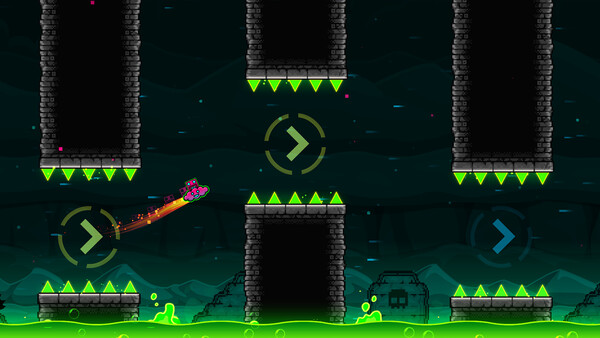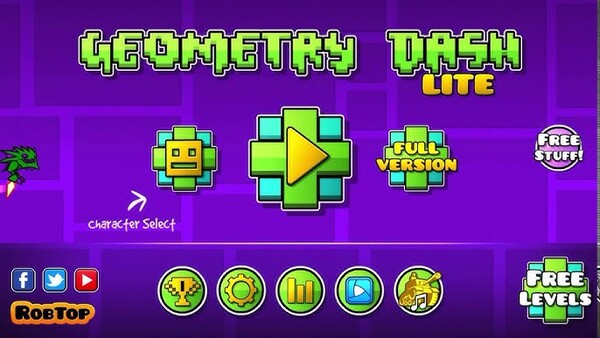Popular Now
Geometry Dash is well known for its fast-paced gameplay, rhythmic action, and brutally unforgiving difficulty. But underneath its flashy neon visuals and catchy soundtracks lies a deceptively complex system that determines success or failure: timing. Mastering timing mechanics isn’t just about tapping to the beat—it’s about learning pixel-perfect inputs, understanding jump arcs, controlling momentum, and predicting obstacle patterns with split-second accuracy.
In this article, we’ll explore the intricate timing systems that define Geometry Dash’s challenge and appeal. We won’t focus on generic gameplay elements. Instead, we’ll deep-dive into timing across ten structured sections—each building on the last to help you move from frustrated beginner to precision-timing expert.

Understanding the Basics of Input Timing
Every Geometry Dash level starts with understanding when—and how—to press.
Input Response and Hitboxes
Your character’s movement is determined by precise input registration. Unlike other platformers that allow a small input buffer, Geometry Dash responds immediately, requiring exact timing. Understanding the hitbox of your cube and other forms (ship, wave, etc.) helps predict safe and unsafe zones.
Rhythm vs. Visual Timing
While music guides you, your eyes must still lead. Many players mistakenly rely solely on rhythm. To succeed, one must learn the synergy between rhythm-based tapping and visual recognition of obstacles.
Frame Rates and Timing Sensitivity
Different devices or settings can impact how tight your input timing feels.
The 60Hz vs. 120Hz Dilemma
Most mobile versions of Geometry Dash run at 60Hz, while PC versions may allow 120Hz or even 240Hz. Higher refresh rates can significantly improve visual clarity and reduce input lag, allowing for smoother jumps and better control in high-speed levels.
How Frame Drops Affect Accuracy
A momentary drop in frame rate can cause input delays, resulting in deaths that feel unfair. High-performance settings and device optimization are essential for consistent gameplay.
Practicing Jump Timing in Cube Mode
Cube mode is the default gameplay state—and the most common source of mistimed jumps.
Identifying Jump Windows
A jump window is the exact zone in which a jump must be initiated to land successfully. These are often only a few pixels wide. Understanding how far a cube travels with a short or long tap helps players anticipate necessary inputs.

Common Mistakes and Fixes
-
Jumping too early before a spike results in immediate death.
-
Over-tapping leads to clipping ceilings or hazards.
-
Solutions: Practice jump patterns in slow speed using practice mode to train your muscle memory.
Timing Variations Across Game Modes
Each transformation (ship, wave, UFO, etc.) introduces its own timing logic.
Key Modes and Their Challenges
-
Ship: Tap strength controls flight height. Mastering tap duration is crucial.
-
Wave: Rapid taps must be evenly timed; irregular taps lead to zigzag collisions.
-
Ball: Changes gravity on tap; requires rhythm-based control to avoid bouncing into spikes.
Adapting Timing Intuitively
Each mode rewards patience and experimentation. Start with easier levels for a new form and incrementally work toward complex ones to understand their physics.
Gravity Portals and Timing Shifts
Gravity changes flip your entire control scheme—literally and mentally.
Adjusting Jump Orientation
After passing through a gravity portal, all timing cues invert. What was once a short jump may now become a long jump, and vice versa. Visual recalibration is key.

Predictive Tapping
Experienced players learn to anticipate gravity shifts and pre-load jump inputs based on memorization. This level of prediction separates casual from competitive players.
Timing Obstacles: Saws, Spikes, and Slopes
Obstacles aren’t just aesthetic—they shape the way you time every action.
Hitbox Precision and Margins
Saws and spikes often have invisible kill zones beyond their visual boundaries. Players must mentally account for these and avoid “grazing” them even when it looks safe.
Slope Influence
Slopes modify trajectory. Jumping from a downward slope increases distance; upward slopes may require earlier taps. Understanding this helps avoid accidental overshoots.
Mastering Portal Chains and Transitions
Rapid-fire portals often occur in mid-air, requiring exacting rhythm.
The Transition Trap
Timing becomes especially difficult when crossing multiple portals in quick succession. For example, hitting a speed boost, followed by a gravity change, then size shrink—all within seconds—requires pre-learned inputs.
How to Practice Complex Sequences
Use practice mode to:
-
Slow down the sequence
-
Add checkpoints between portals
-
Focus on one transition at a time until it’s consistent
Speed Portals and the Illusion of Time
Speed portals alter the flow of time—and your reaction window.
Speed Levels and Player Input
There are four speed portals:
-
Slow (0.5x)
-
Normal (1x)
-
Fast (1.5x)
-
Very Fast (2x)
The faster the level, the less time you have to react. Your jumps must become anticipatory rather than reactive.
Controlling Nerves at High Speed
Speed increases often lead to panic-tapping. A calm approach and pre-tap awareness reduce panic-induced errors. Mental rehearsal before attempting a fast section improves results dramatically.
Using Practice Mode to Fine-Tune Timing
Practice mode is more than a tool for checkpointing—it’s essential for refining timing.
Setting Effective Checkpoints
Strategically place checkpoints right before timing-critical sections. This isolates variables and helps players understand how different tap strengths or timings affect outcomes.

Custom Practice Maps
Some creators make training levels focused on wave control, ship handling, or timing drills. These can build consistency outside of normal level runs.
Pushing Limits: Timing in Demon and Extreme Demon Levels
At the highest levels of difficulty, timing becomes brutally unforgiving.
Frame-Perfect Inputs
In Extreme Demon levels, many jumps must be executed within 1-2 frames. Achieving consistency here requires hours of repetition and a near-robotic tap rhythm.
Endurance and Muscle Memory
These levels require physical stamina and mental focus. Taking breaks, warming up, and developing routines can keep you sharp during long grinding sessions. Successful runs often come not from sudden skill leaps but from accumulated memory and calm precision.
Conclusion
Timing in Geometry Dash isn’t just a matter of tapping when it feels right—it’s a skill built through deep understanding, frame-level awareness, and obsessive repetition. From learning cube mechanics to mastering transformations and portal chains, the game demands an evolving grasp of rhythm, visual cues, and physics. Each jump, flip, and tap exists in a narrow window of success. But with structured practice and focus, those windows start to open wider, and what once seemed impossible becomes second nature.
Whether you aim to beat your first Hard level or dive into the unforgiving world of Extreme Demons, remember: Geometry Dash doesn’t just challenge your fingers—it trains your mind.

















